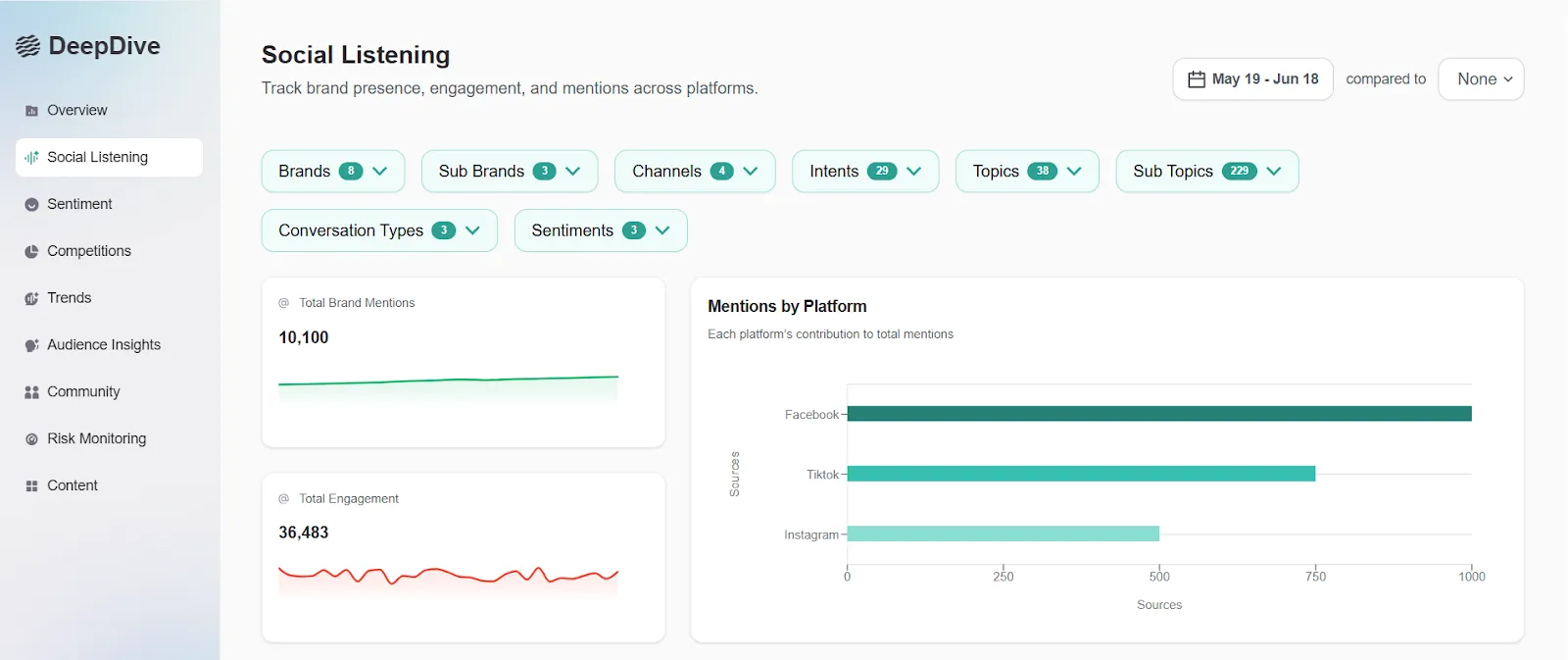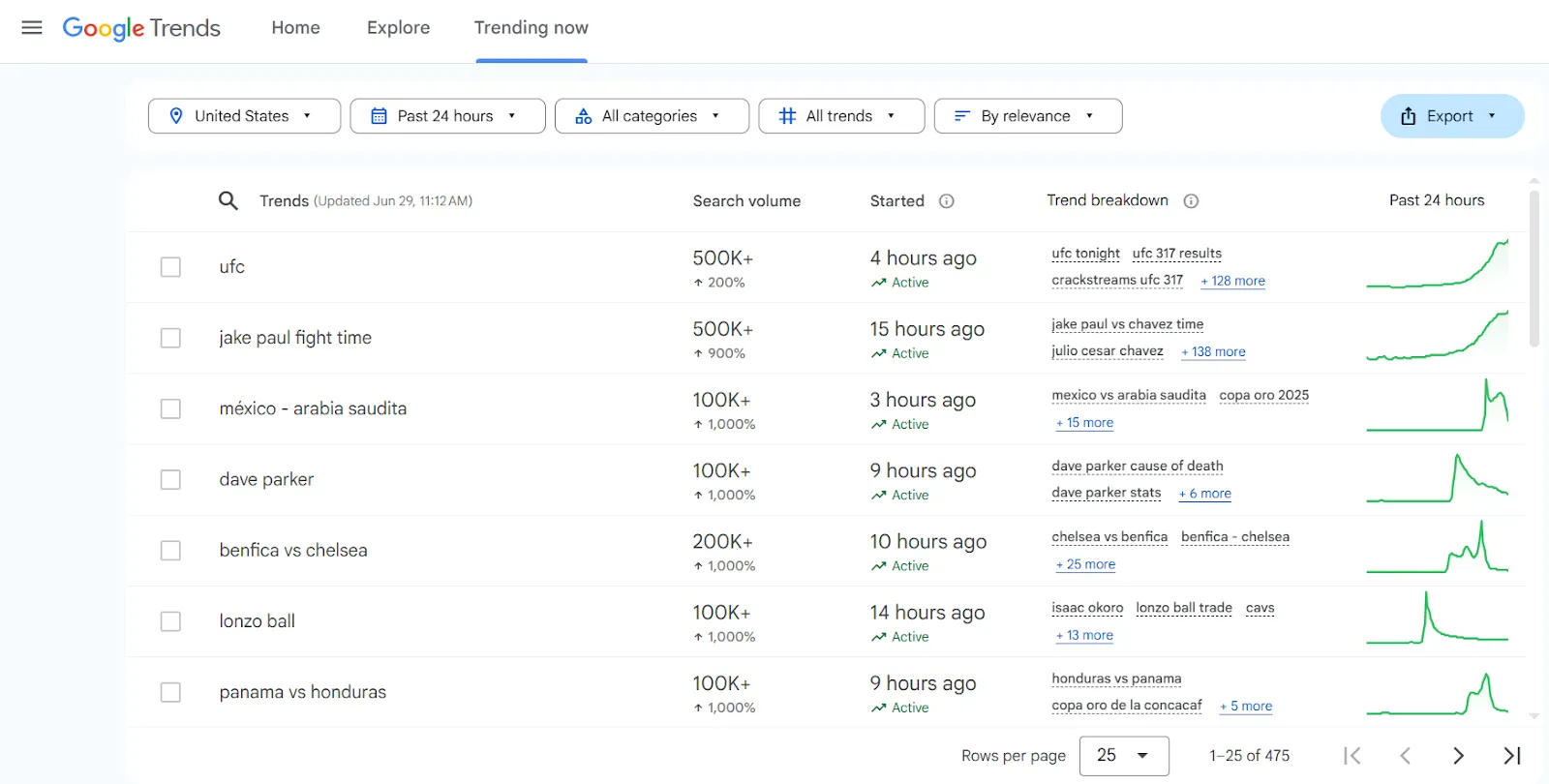We are excited to announce our $2M seed round led by Joa Capital.
Read Now

October 19, 2025
Syed Mohammad Sharfuzzaman Nayeem
Understanding your market is more than just a luxury because it’s linked to your survival. Whether you are a startup founder, marketing manager, or product strategist, you will always have to be on the lookout for emerging opportunities.
Seizing these opportunities keeps you ahead of the competition. And it’s not just about profitability. When you know the market, you know when things are going downhill, and then you can strategize to hedge that risk.
This guide is designed to walk you through a hypothetical industry analysis example and show how you can use it to uncover market trends, gain consumer insights, and leverage better competitor analysis tools.
Someone must have done an industry analysis to come up with the above numbers. The question is, “Is an industry analysis limited to only numbers and percentages?”
The above are the “What is happening in the market” of a report. But a good industry analysis example always answers why something is happening and what more could happen. The latter matters the most. COVID-19 locked people in their homes with electronic devices and the internet, and we saw a surge in social media activity combined with a decline in average attention span. Did this trend subside once the pandemic was over?
The trend wasn’t just how people were using their phones a lot, but how they were getting addicted to the routine of checking their phones or scrolling TikTok. Brands and creators that could see the real picture banked on this opportunity, and so today we have businesses running ads 24/7 on social media and a very big creator economy.
So, the short answer to the question is, industry analysis uses consumer insights and paints the real picture.
For the industry analysis example, let’s say you’re launching a new organic skincare line. As people are getting more conscious about the impact of artificial ingredients on their skin, the natural products space is booming. However, it’s saturated.
Your job is to find a niche, identify growth areas, and differentiate from existing players.
Having broad objectives sounds fun in theory. But the more focused you are, the more actionable your analysis becomes.
Our scope here is the US organic skincare market for Gen Z consumers.

Grand View Research says that the global organic skin care market will reach $21.6 bn by 2030 at a CAGR of 8.9%.
If we talk about the US, Gen Z’s preference for clean, ethical products largely drives the market.
This is one of the consumer insights that reveal that ethics and transparency are becoming baseline expectations in the market.
This is where you will need the best competitor analysis tools. Acquaint yourself with tools like Brand24, DeepDive, and Semrush. Use these tools to -
Analyzing the market gives you the names of the top players in the market. Through competitor monitoring, you can look at the social media strategies and ad performance of these players. The benefit is that you now have an understanding of what’s working in the market.

Once you are done with competitor monitoring using the best competitor analysis tools, move on to the consumers.
This step looks at the demand side of things. Reddit forums, Statista, Google Trends, and Social media groups can give you access to consumer insights. Leverage social listening to dig deeper.
In addition, you can start following content creators promoting organic skin care or advocating the use of natural ingredients instead of artificial ones.
Maybe you will find an actionable trend like a growing demand for fragrance-free and gender-neutral products among Gen Z.

You can use frameworks like Porter’s Five Forces or PESTEL analysis to understand the industry dynamics.
For instance, Porter’s Five Forces talks about -
It helps you identify pressure points and strategic openings you can take advantage of.
Whatever you have found so far goes under this section. Let’s say that for our hypothetical industry analysis example, we have found that -
Using this industry analysis example, your strategy could be to launch a gender-neutral, ethically sourced, fragrance-free serum with transparent labeling
As mentioned before, identifying what could happen next is the most important part. This is the part where you combine historical data and current indicators and ask yourself questions about the future.
If yes, and your competitors haven’t yet capitalized on it, you should.
If your scope is broad, you will be all over the place. Narrowing down your target gives you specific instead of generic results.
Always check publication dates and sources. Most people will jump on the first research paper PDF they stumble upon on the internet. And now with ChatGPT, people don’t even bother to proofread the output. But GPT often generates made-up data.
Social listening is neither a buzzword nor an optional checkbox. It’s important to understand market sentiment.
Invest in better competitor analysis tools and market intelligence software.
At its core, a good industry analysis doesn’t just describe a market - it helps you navigate it. From tracking trends and monitoring competitors to uncovering consumer behavior shifts, every step is about building a clearer picture of where the real opportunities lie.
Avoid common pitfalls, stay updated, and keep your scope sharp. And most importantly - read industry analysis reports to stay updated on markets you are interested in. Whether you're entering organic skincare, electric vehicles, or mobile financial services, one thing stays constant — markets move fast, and assumptions age quickly. The more markets you study, the better your eye for trends, gaps, and opportunities becomes.
Discover How Audience Intelligence can help your brand grow